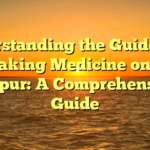Exploring the Role of Sports Medicine in High School Athletics: A Comprehensive Guide
The Importance of Sports Medicine in High School Athletics
Sports medicine plays a crucial role in high school athletics, as it focuses on the prevention, diagnosis, treatment, and rehabilitation of sports-related injuries. With the increasing emphasis on physical fitness and competitive sports in high schools, the need for qualified sports medicine professionals has never been greater. This comprehensive guide will explore the various aspects of sports medicine in high school athletics and provide valuable insights for athletes, coaches, and parents.
Key Components of Sports Medicine in High School Athletics
1. Injury Prevention
One of the primary goals of sports medicine in high school athletics is to prevent injuries before they occur. This involves educating athletes on proper warm-up and stretching techniques, as well as implementing injury prevention programs tailored to specific sports. Sports medicine professionals also assess the athletic facilities and equipment to ensure they meet safety standards and minimize the risk of injuries.
2. Injury Evaluation and Diagnosis
When injuries do occur, sports medicine professionals are responsible for evaluating and diagnosing the extent of the injury. This may involve conducting physical examinations, ordering diagnostic tests such as X-rays or MRI scans, and developing treatment plans based on the diagnosis.
3. Treatment and Rehabilitation
Once an injury has been diagnosed, sports medicine professionals work with athletes to develop personalized treatment and rehabilitation plans. This may include physical therapy, strength training, and other interventions to help athletes recover and return to their sport safely.
The Role of Sports Medicine Professionals in High School Athletics
1. Athletic Trainers
Athletic trainers are essential members of the sports medicine team in high school athletics. They are responsible for providing immediate care to injured athletes, implementing injury prevention programs, and coordinating with other healthcare professionals to ensure the overall well-being of the athletes.
2. Team Physicians
Team physicians play a crucial role in high school athletics by providing medical oversight and expertise. They are responsible for evaluating and diagnosing injuries, prescribing treatment plans, and making return-to-play decisions for injured athletes.
3. Physical Therapists
Physical therapists work closely with injured athletes to facilitate their recovery and rehabilitation. They design and implement individualized exercise programs to improve strength, flexibility, and mobility, helping athletes regain their physical capabilities after an injury.
Challenges and Opportunities in Sports Medicine for High School Athletics
1. Funding and Resources
One of the main challenges in sports medicine for high school athletics is the availability of funding and resources. Many high schools struggle to allocate sufficient resources to support a comprehensive sports medicine program, including hiring qualified professionals and providing necessary equipment and facilities.
2. Education and Training
Another challenge is the need for ongoing education and training for sports medicine professionals in high school athletics. Staying updated on the latest research, techniques, and best practices is essential for providing the highest level of care to student-athletes.
3. Collaboration and Communication
Effective collaboration and communication among sports medicine professionals, coaches, athletes, and parents are essential for the success of sports medicine programs in high school athletics. Clear communication channels and mutual respect for each other’s expertise are crucial for ensuring the well-being of the athletes.
The Future of Sports Medicine in High School Athletics
The future of sports medicine in high school athletics holds great promise, as advancements in technology, research, and education continue to enhance the quality of care for student-athletes. With a growing emphasis on injury prevention, personalized treatment plans, and holistic approaches to athlete well-being, the role of sports medicine in high school athletics is poised to make a significant impact on the overall health and performance of student-athletes.
Conclusion
In conclusion, sports medicine plays a vital role in high school athletics by focusing on injury prevention, evaluation, treatment, and rehabilitation. The collaboration of athletic trainers, team physicians, physical therapists, and other sports medicine professionals is essential for providing comprehensive care to student-athletes. While there are challenges and opportunities in sports medicine for high school athletics, the future looks promising with a continued commitment to the well-being and success of student-athletes.










